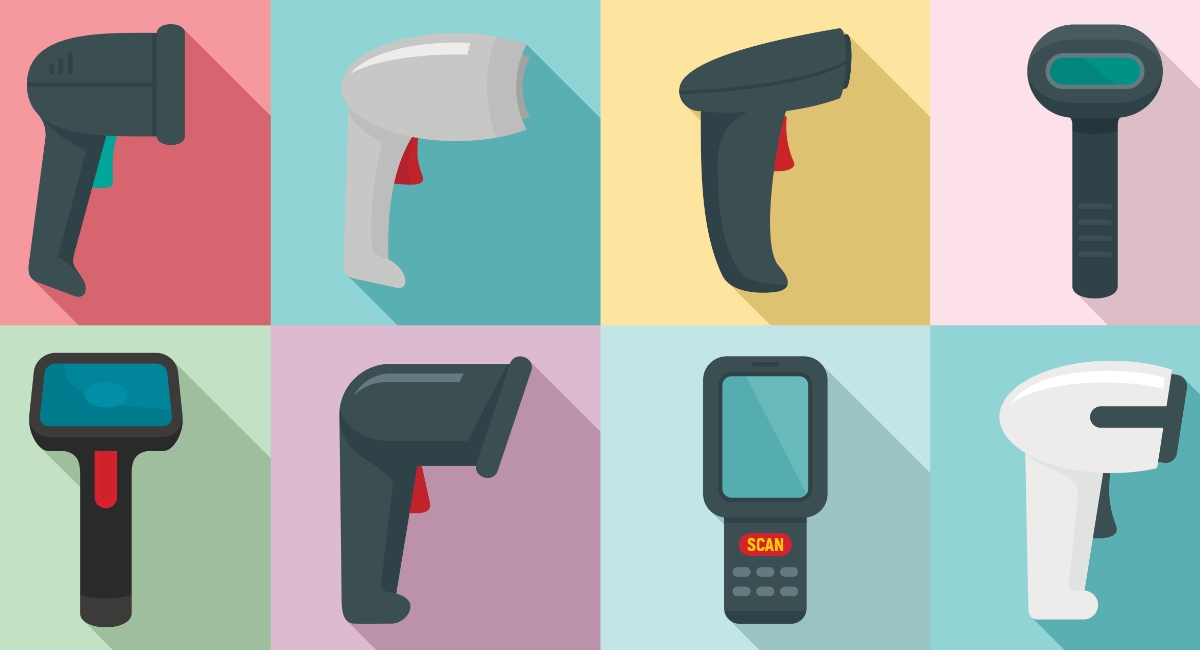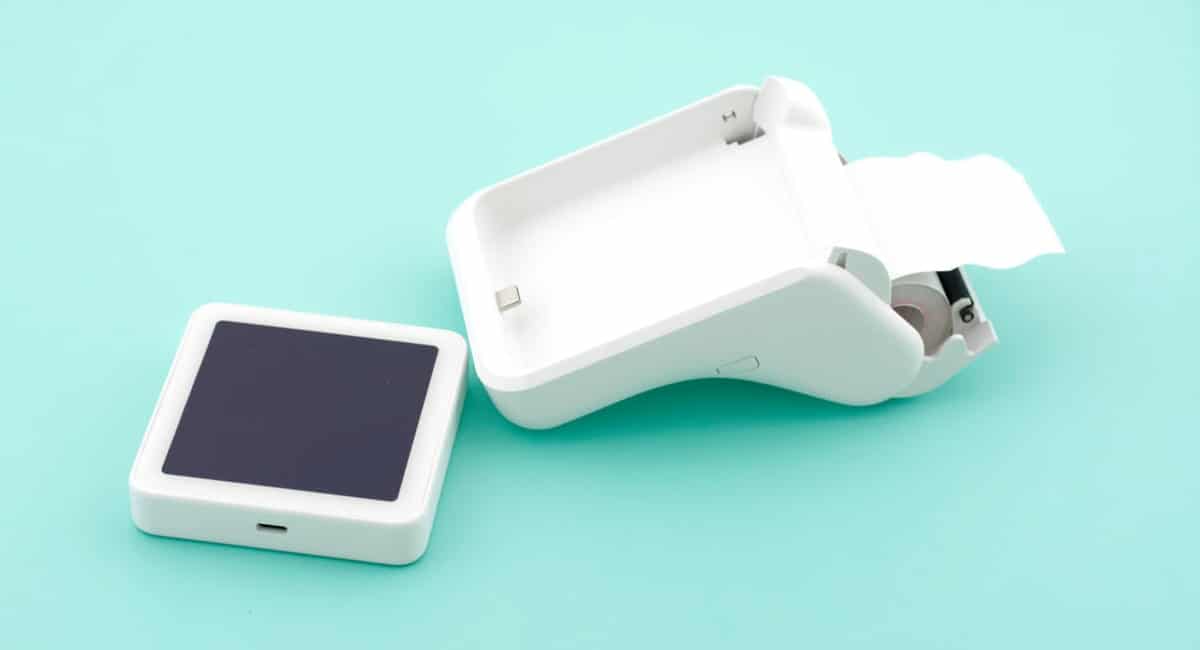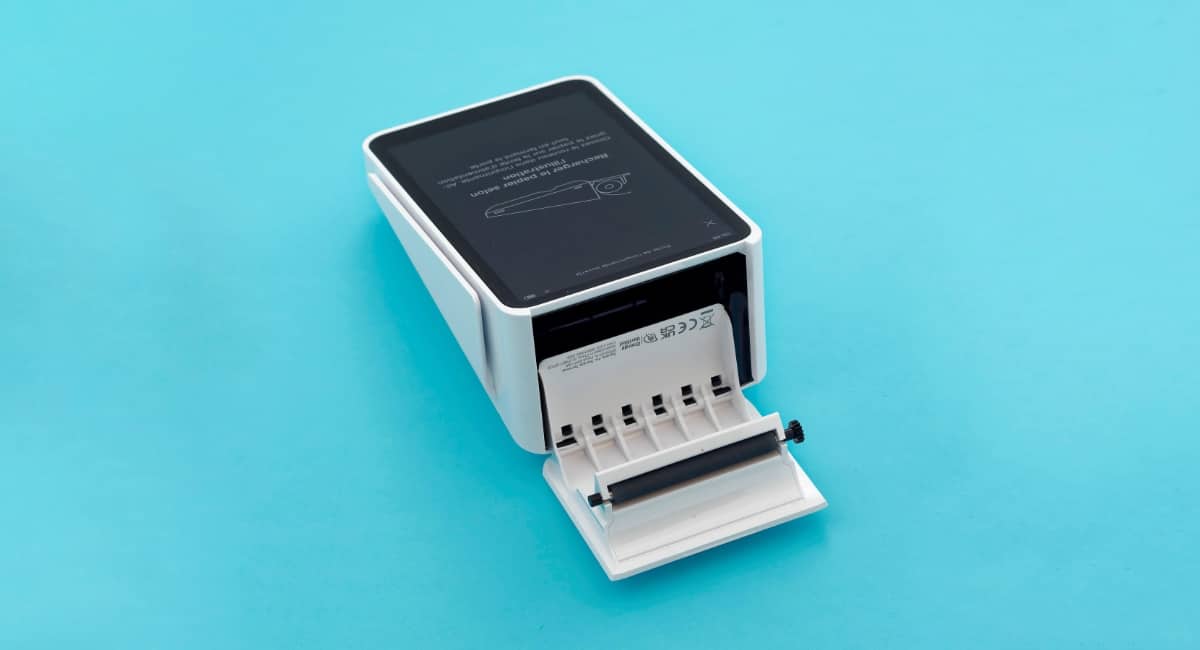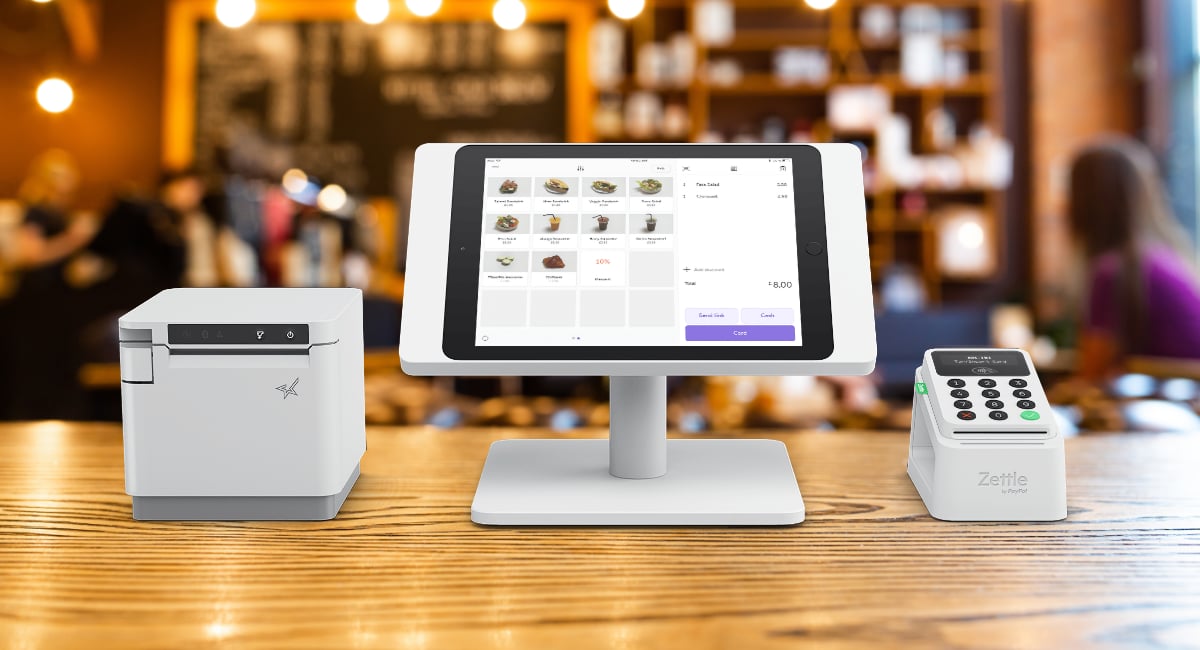Barcode scanners have been used for decades in retail, and they are still relevant. But what are all the different uses and types of barcode scanner?
The information processed with a scan depends on the type of code, context and software it’s connected with.
Believe it or not, there are different styles of barcode for separate purposes, and only some of them are used to tally a bill at a till point.
In this article, we’ll determine the different:
- Uses of barcode scanners
- Scanning methods
- Scanning technologies
- Scanner designs
But first, let’s cover how a barcode reader works.
What is a barcode scanner?
A barcode scanner is an electronic device that scans a barcode to process information about a specific product.
How it works
A barcode scanner uses LED, laser or camera technology to determine the pattern of codes.
In the case of traditional laser and LED scanners, the light emitted from the scanner is reflected back to the barcode reader at different intensities depending on whether it reads a white space (most reflection) or black line (least reflection).
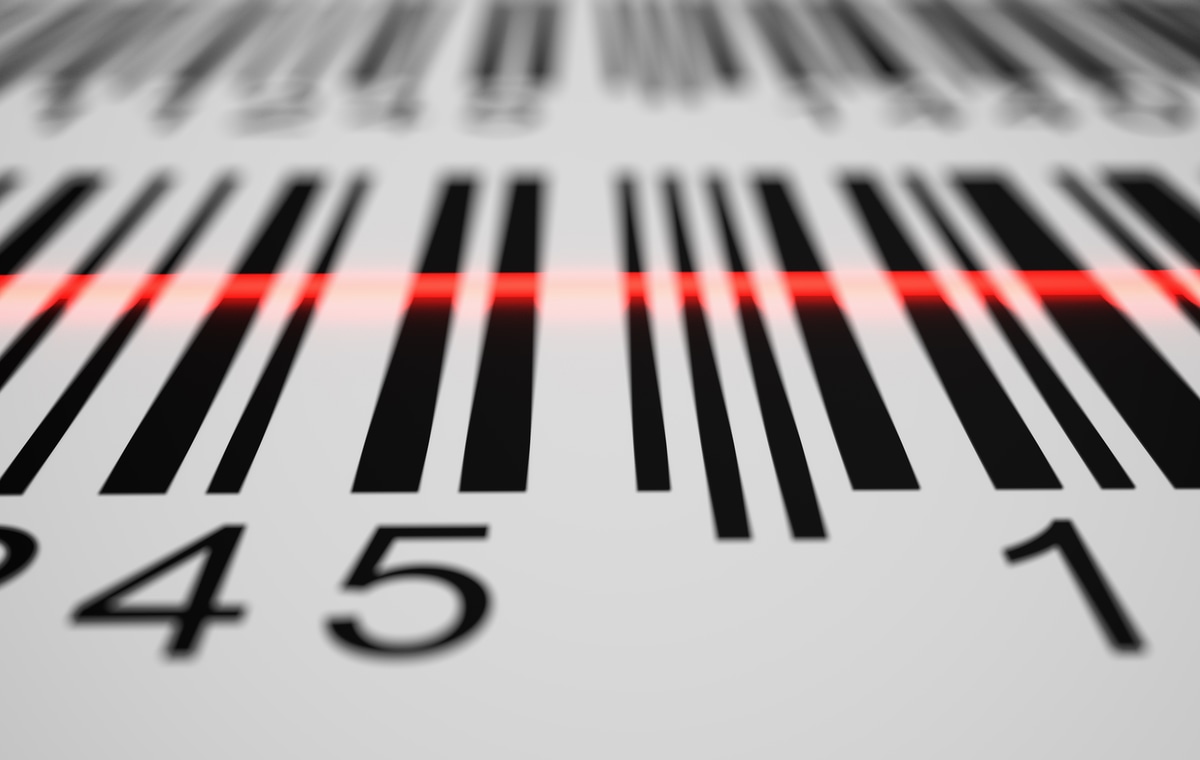
Laser scanners read the intensity of light reflecting back from the black and white barcode.
The reader converts this reading into data and communicates this to the point of sale (POS) system or inventory software it’s connected with.
In essence, a barcode scanner doesn’t work in isolation. It takes three parts to make the process work:
- The barcode is the visual print, label or screen image of the code stripes or patterns.
- The scanner reading the sequence of stripes or patterns of the barcode, then communicating this information to the software it’s connected with.
- The POS or inventory software interpreting the barcode and performing the function it’s set up to do, such as adding the item to a checkout bill.
When you get a barcode reader, it has to link with your electronic point of sale (EPOS) to function. It is the POS system that links the reading of a barcode to products, but it has to have a record of the barcode in the first place. If there’s no barcode data in the EPOS, you may have to upload this data in the software or connect it with an online database first.
Why use a barcode scanner?
A barcode scanner helps with inventory tracking, the checkout flow and recording information accurately. In retail, these functions are essential when you have 1000s of items on the shelves and/or a busy till.
When you have a large inventory, it’s common to do a periodic stocktake with a barcode scanner to monitor stock levels, discover if items were booked in correctly, and see if there’s been any theft.
Or shop staff can just randomly check this information by scanning specific products in response to a customer query or suspicion of theft. With an accurate stock count, the system knows which products need to be reordered, and you can analyse sales trends accurately.
Perhaps more importantly for retailers, POS systems can be connected with a barcode scanner to make it faster to process items that customers need to pay for at the register. If you had to manually enter a product code or write the details of items on a bill or receipt, it takes longer to deal with a queue of impatient customers.
Because a barcode scanner reads numbers accurately every time (the stripes represent numbers), you also prevent mistakes when booking in new stock from a delivery or tallying up a bill.
Types of scanning setups
You don’t necessarily have to buy a separate barcode scanner made for that purpose only – there are other ways to scan products if you have the hardware and retail software to support it.
The different scanning methods can be grouped into:
- Standalone barcode scanners – these have no other function than scanning barcodes or other types of codes.
- Scanning with a mobile device – a smartphone or tablet uses an app to read barcodes through the mobile device camera.
- Scanning with a card machine – a card payment terminal with a built-in camera that reads barcodes.
The most common setup with a barcode scanner is a standalone scanner connected to a POS system. This allows checkout staff to quickly scan items from a customer’s shopping basket to add them to a bill on the register.
Warehouse workers or stocktake staff can get standalone inventory scanners, which are mobile devices designed to record stock information directly on it. These are expensive and typically have a screen and keypad, though modern versions look more like a smartphone with just a touchscreen. They are not for retail checkouts.
If we go back to POS systems, you can avoid buying a freestanding barcode scanner with the following.
Certain apps like Zettle Go (simple POS system) and Lightspeed Scanner (works with Lightspeed for Retail) allow you to scan with your phone by activating the camera when you need to scan something. These apps tend to work with iPhone and iPad only.
Many modern card machines – mainly smart POS terminals with a touchscreen – also have a camera built in that can scan barcodes. Some examples with scanning capability include Zettle Terminal, myPOS Slim, PAX A920 and Verifone V240m.
If using this sort of camera technology, the payment software in the barcode-scanning device is designed to recognise barcode patterns in a photo and identify the product it’s associated with.
Types of barcode scanners
Now we’ve established the setups, we can distinguish between the different types of hardware you can get for scanning.
There’s a model for any setup and type of barcode – and what suits one retailer may be impractical for another. Before you buy a scanner, check which types, makes and models are compatible with the rest of your POS equipment and software. It won’t work if you get one that isn’t recognised by your till system.
Wireless vs corded scanners
For a fixed till point, you can get a wired barcode scanner that has to be plugged into the EPOS system via cable. Although wires can get in the way and sometimes be too short, you won’t have to recharge the scanner.
Portable and mobile barcode scanners are wireless, on the other hand, so they need to be recharged. Often, these come with a charging station that’s perfect for a till point, so they are more flexible (and pricier) than the corded models.
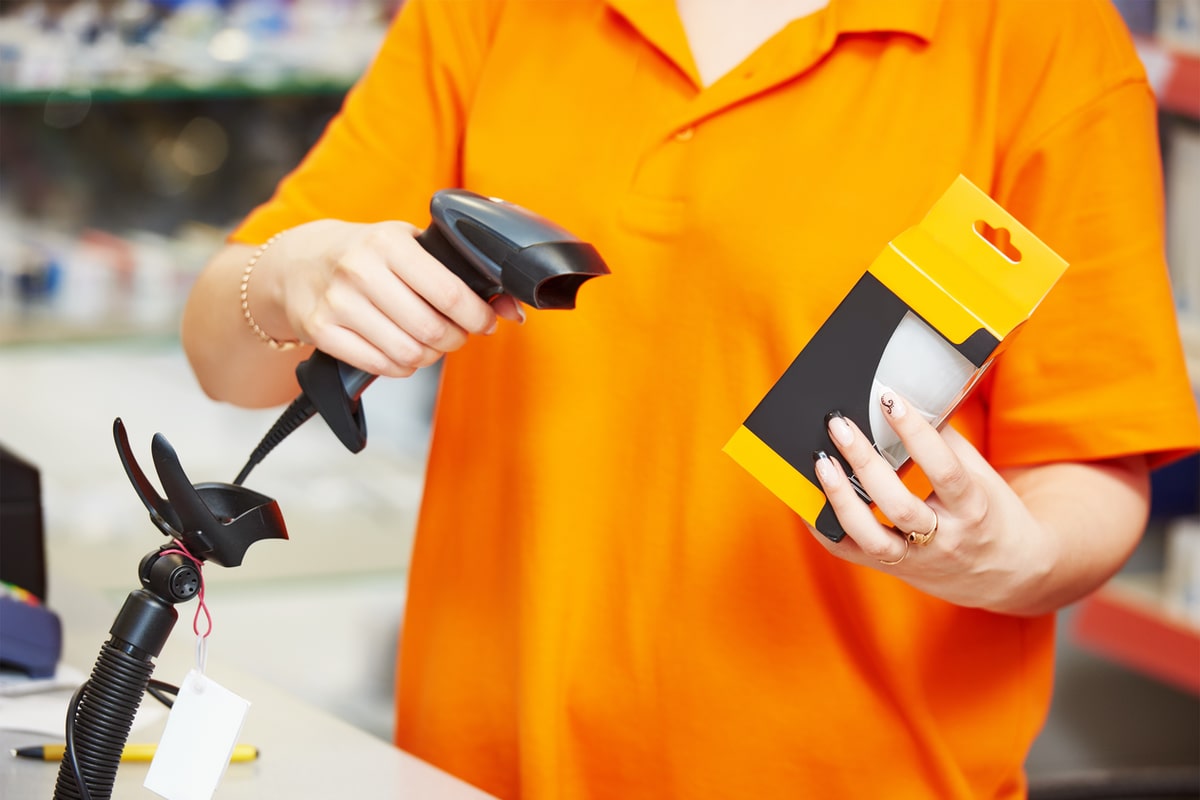
A corded, handheld barcode scanner with a holder to go with it.
1D vs 2D scanners
Which barcode formats do you need to scan? There are different types of barcodes, and before you buy a scanner, you should check if it can scan the codes needed in your retail shop.
The most common type is one-dimensional (1D) codes, i.e. serial lines of various widths and spacings. In the UK, most barcode scanners can read Universal Product Codes (UPC) and European Article Numbers (EAN), which are standard codes to process at a retail checkout.
But there are two-dimensional (2D) codes too, which are shapes and symbols usually concentrated in a square patch. The most common of these are QR codes, which all modern smartphones can read as well. Many standalone scanners can read 2D barcodes, but not all of them.
From year 2027, all retail POS systems should be able to scan QR codes, so a 2D scanner will be much more widespread then.
Handheld vs presentation scanners
Handheld scanners are generally more flexible, since they can be directed by your hand to the product at any angle or distance. They tend to have a button that you press to activate the laser or LED beam. Many of these scanners also have a stand where you can rest the scanner, with an option to switch on a constant beam for scanning items at an angle underneath it.
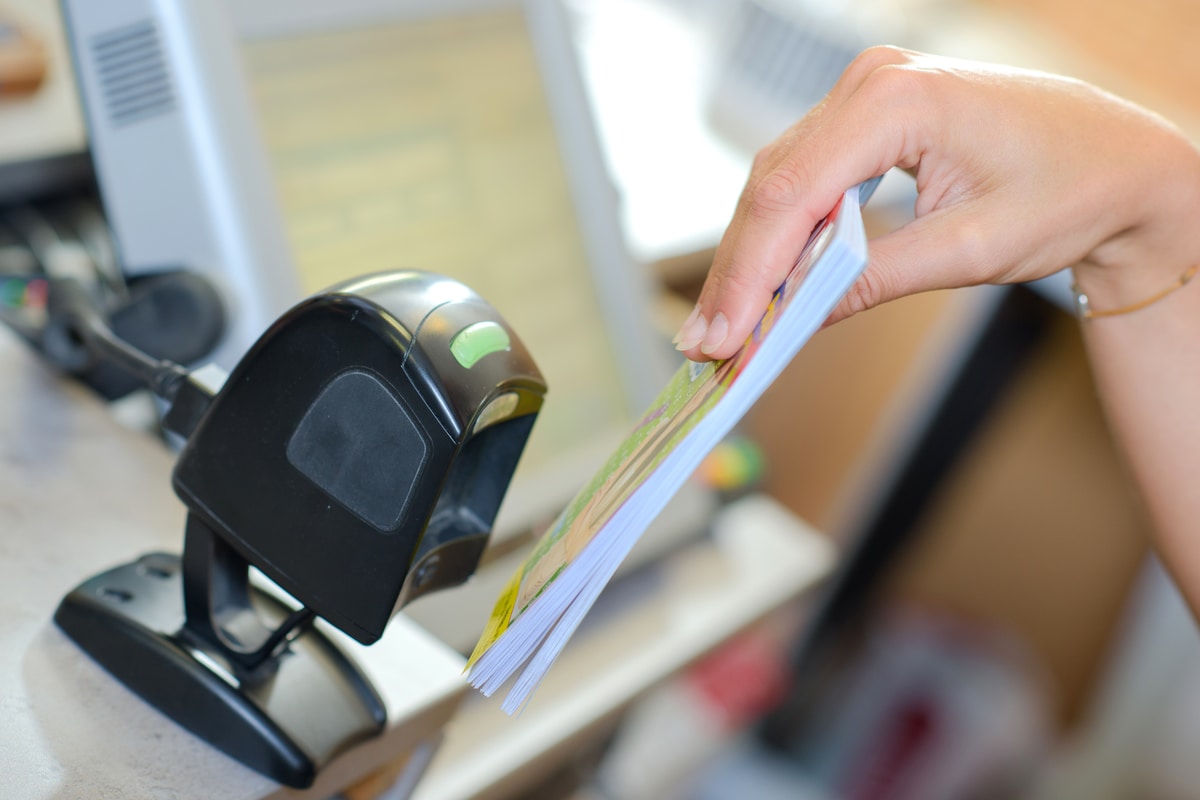
Presentation barcode scanners are fixed and require you to position the barcode in front of it.
At the other end of the spectrum, we have presentation barcode scanners. These are fixed to the counter and can’t be moved. Instead, you ‘present’ each product barcode to the front of the scanner for reading.
Wearable barcode scanners
Wearable scanners are less common among retailers, but they are useful for mobile workers who need to multitask with their hands. They’re designed to be strapped around your hand, since it’s easiest to direct the scanner that way.
Scanners built into the counter
Supermarkets often have a barcode scanner installed inside the countertop so the till worker only has to move the product through the space in front of them. This sort of setup is more expensive, but efficient for grocery chains who can afford it.

